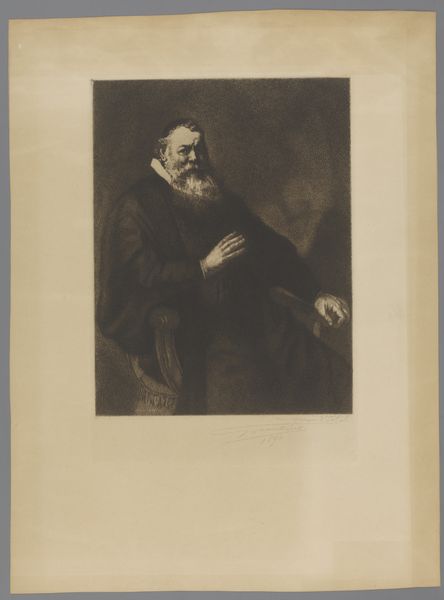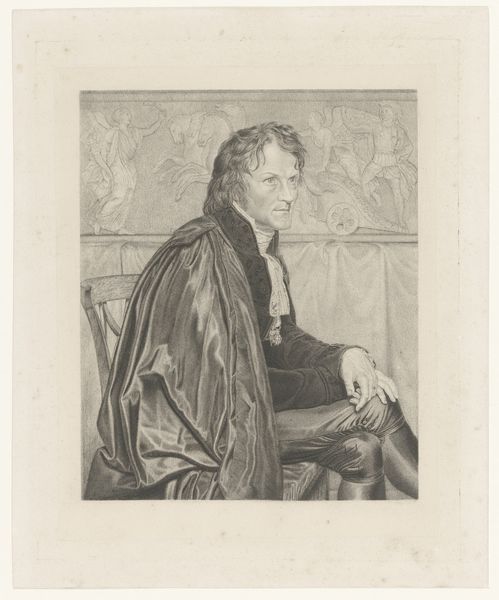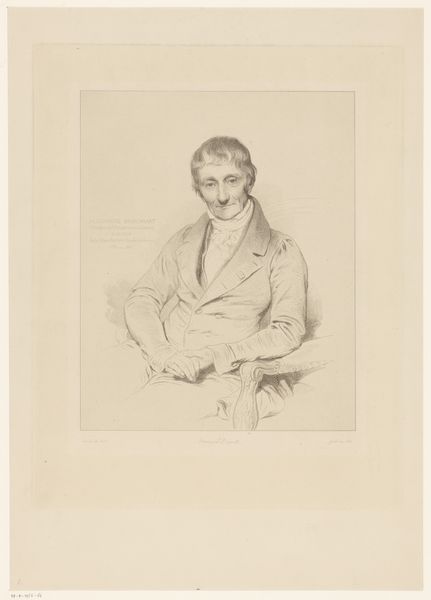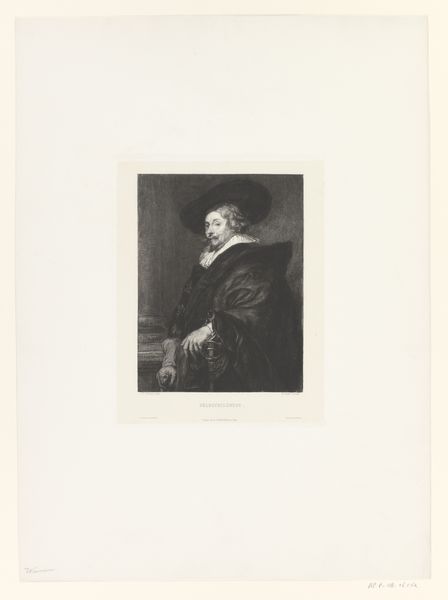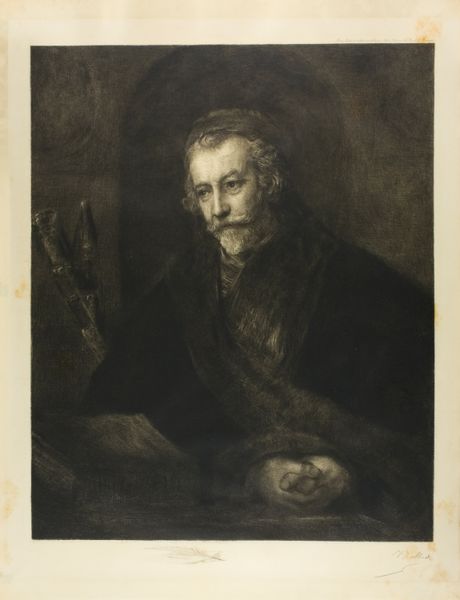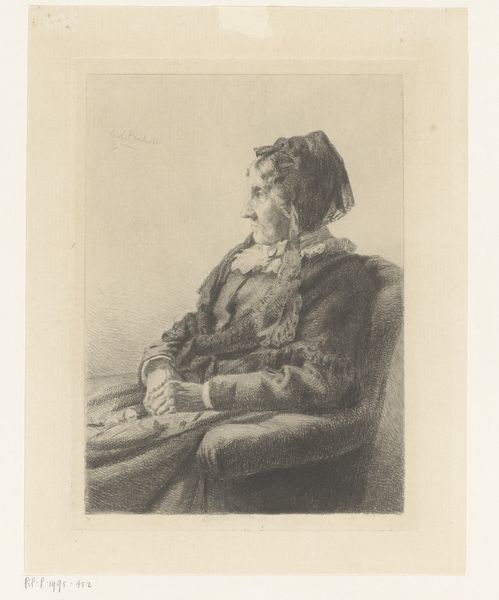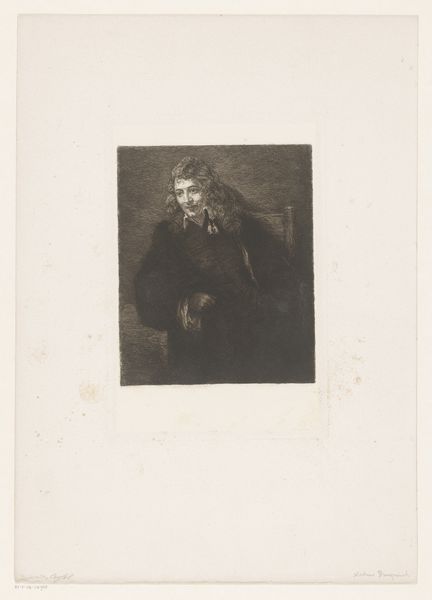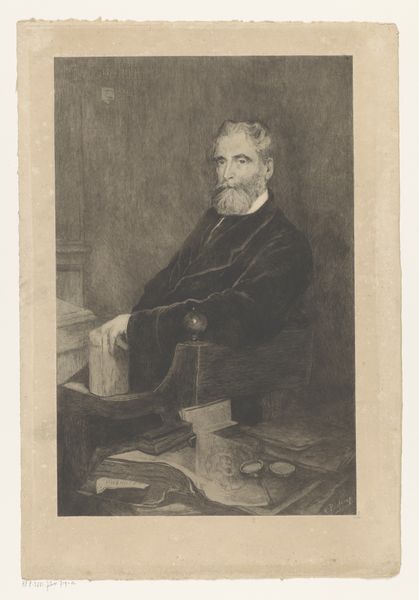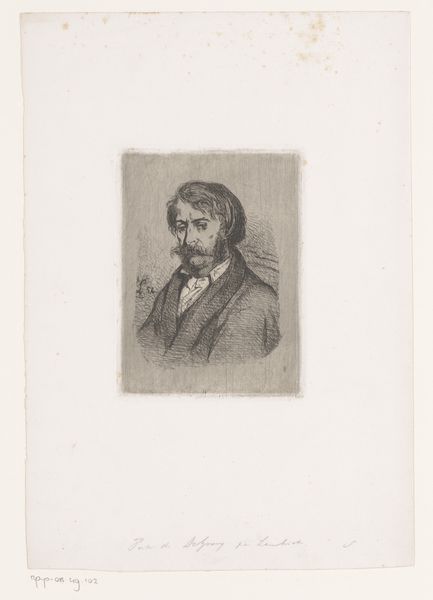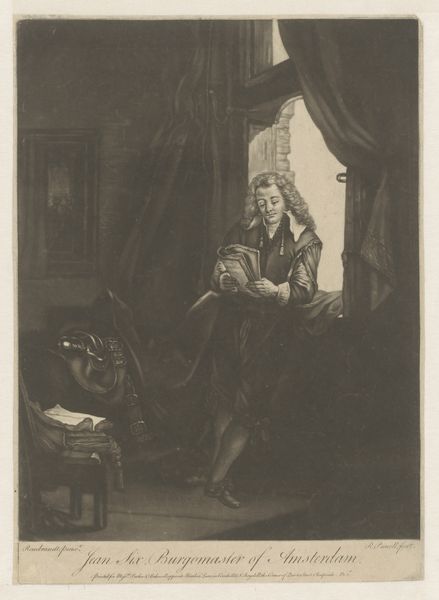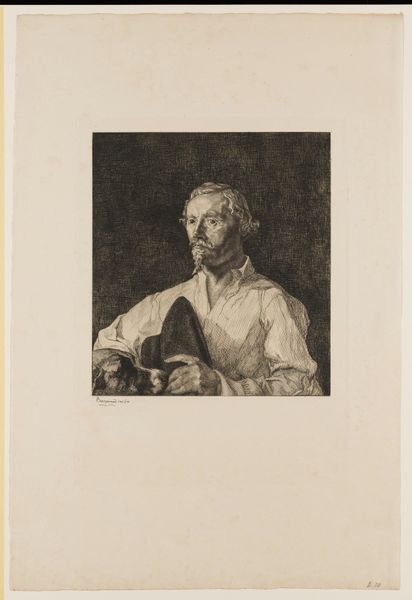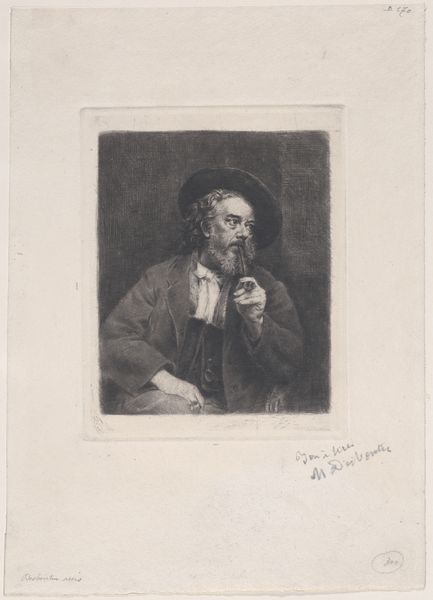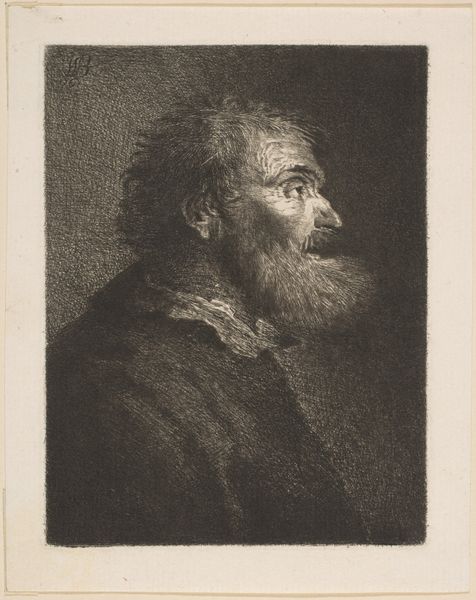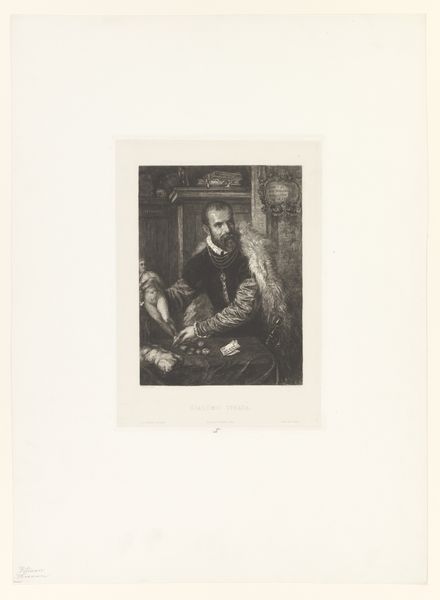
Dimensions: height 503 mm, width 354 mm
Copyright: Rijks Museum: Open Domain
This mezzotint portrait of George White was created by Thomas Watson, sometime in the late 18th century. The composition is structured around a play of light and shadow that models White's form, seated amidst classical architectural elements. A muted palette enhances the somber, reflective mood. Watson masterfully uses texture to define space and character. Notice the contrast between the smooth skin of White’s face and the rough texture of his hair, achieved through the mezzotint technique. This textural differentiation extends to the broader composition, setting up contrasting relations between organic form and the hard, geometric architecture. Consider the semiotic implications of placing White within a classical setting. The column, the books, and the dramatic sky all signify knowledge, stability, and the sublime. Watson’s technical skill not only captures a likeness but also constructs a narrative about intellect and status. As you reflect on this image, consider how Watson uses form to convey layers of cultural meaning.
Comments
No comments
Be the first to comment and join the conversation on the ultimate creative platform.
